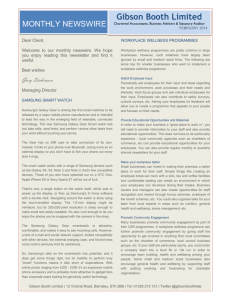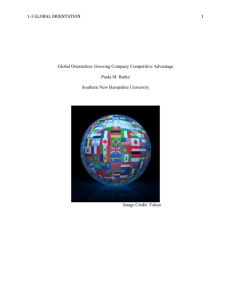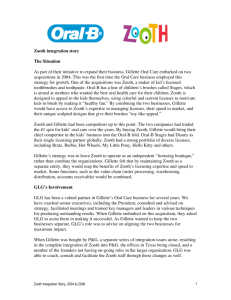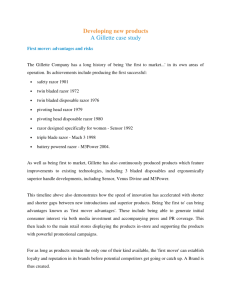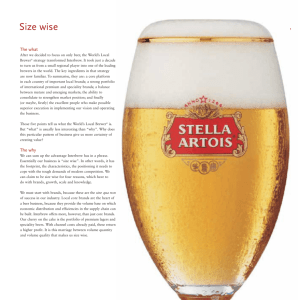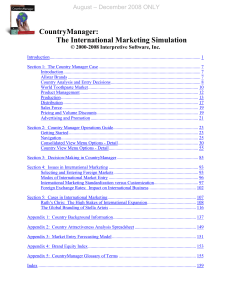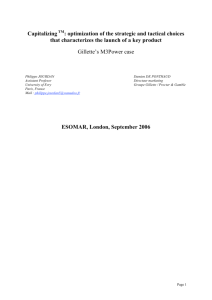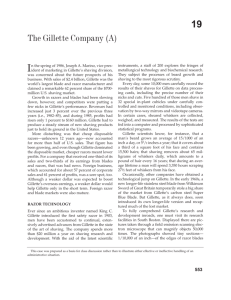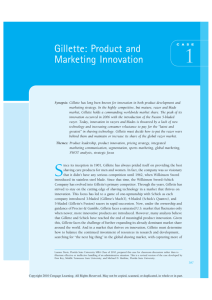Course Objective - Catholic University of America
advertisement
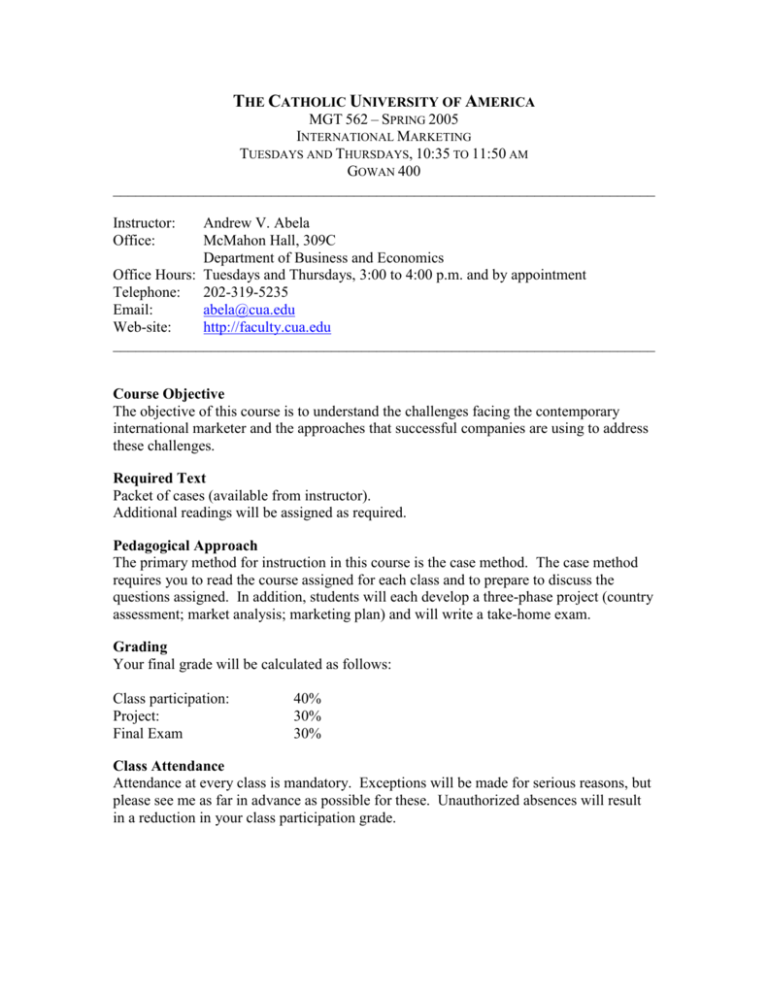
THE CATHOLIC UNIVERSITY OF AMERICA MGT 562 – SPRING 2005 INTERNATIONAL MARKETING TUESDAYS AND THURSDAYS, 10:35 TO 11:50 AM GOWAN 400 ________________________________________________________________________ Instructor: Office: Andrew V. Abela McMahon Hall, 309C Department of Business and Economics Office Hours: Tuesdays and Thursdays, 3:00 to 4:00 p.m. and by appointment Telephone: 202-319-5235 Email: abela@cua.edu Web-site: http://faculty.cua.edu ________________________________________________________________________ Course Objective The objective of this course is to understand the challenges facing the contemporary international marketer and the approaches that successful companies are using to address these challenges. Required Text Packet of cases (available from instructor). Additional readings will be assigned as required. Pedagogical Approach The primary method for instruction in this course is the case method. The case method requires you to read the course assigned for each class and to prepare to discuss the questions assigned. In addition, students will each develop a three-phase project (country assessment; market analysis; marketing plan) and will write a take-home exam. Grading Your final grade will be calculated as follows: Class participation: Project: Final Exam 40% 30% 30% Class Attendance Attendance at every class is mandatory. Exceptions will be made for serious reasons, but please see me as far in advance as possible for these. Unauthorized absences will result in a reduction in your class participation grade. Class Participation Class participation grades will be assigned according to the following table: Grade A B C D F Say something that makes a … … large contribution to the class (i.e. something insightful that helps the rest of the class understand and engage with the material being discussed) Every week Occasionally Rarely Never Never … small contribution to the class (i.e. any helpful comment) Every class Every class Most classes Occasionally Rarely or never If you find you are having any difficulty with participating in class, please see me and we can discuss ways to help you get more involved. Class Preparation In order to participate effectively in class, you will need to be thoroughly prepared. Before each class you will need to read the assigned case study carefully, and prepare written responses to the case questions as well as other comments and questions about the case. Your written responses should be typed and in point form, so that you can use them to help you make good comments in class. I will sometimes, but not always, collect this written work. Case questions Nielson International in Mexico 1. What appear to be the main factors contributing to success in the global confectionery products market? 2. What are the advantages and disadvantages expanding into Mexico for Nielsen? Should they enter this market? 3. If Nielsen International does decide to enter Mexico, what options are available to them? 4. Should Howard Bateman accept Sabritas’ proposal? Why, or why not? South African Breweries 1. What factors led SAB to enter the Tanzanian market? Was this a good decision in 1994? 2. Why were they successful? 3. What skills will they need to compete against Guinness? What should Niemandt do? The Global Branding of Stella Artois 1. Does it make sense for Interbrew to develop a global brand? 2. Does Stella Artois appear to be the right choice as the company’s flagship brand? 3. Interbrew’s strategy has focused on developing cities as markets rather than on the more traditional view of countries as markets—what are the pros and cons of this approach? 4. What would Interbrew have to do to succeed with Stella in the Washington, DC metro area? Would these requirements vary much among major cities? 5. What role should the Internet play in developing Stella as a global brand? Case questions (cont.) Henkel 1. Why are Unilever and P&G harmonizing their brand portfolio internationally? What benefits are they aiming to achieve? 2. Is it a strategic necessity for Henkel to follow suit – are they in the same situation as their competitors? 3. What brand strategy should Henkel follow in Italy and Spain? Specifically, what are the potential losses and gains from introducing the Persil brand in these markets? SADAFCO 1. What are the strengths and weaknesses of SADAFCO? 2. At what stage of development is the Saudi Arabian ice-cream market? How will the entry of the multinationals influence the development of the market? 3. What should be SADAFCO’s response to the intensified competition in the Saudi Arabian ice-cream market? Can it survive in the face of this well-funded challenge to its position? Procter & Gamble: Always Russia 1. How successful has P&G been in building this business? What has been done differently from usual practice in (a) developed Western markets and (b) other emerging markets? 2. What are the strategic options facing P&G Russia and the Always brand? What is the market potential for this brand? 3. What do you recommend with regard to the three decisions highlighted in the introduction (Always pricing, the localization of marketing strategy in different Eastern European countries, and the product range offered in Russia?) 4. The conclusion to the case (p. 13) describes the emergence of a “parallel importing” (gray market) problem. How serious is this problem? Why has it arisen? What can P&G do about it? Banco Solidario (to come) Gillette Indonesia 1. What factors determine demand for blades? How can demand be increased? 2. How is Gillette doing in Indonesia? Has Gillette enjoyed a first mover advantage? 3. How should Gillette accelerate the development of the blade market in Indonesia? The Pharmaceutical Industry and the AIDS Crisis in Developing Countries 1. Why did the drug companies sue the South African government in March, 2001? Was this a good idea? 2. Why did Cipla make the offer to cut AIDS drug prices? What do you think of this offer? 3. What is the purpose of a drug company? 4. What will it take to resolve the AIDS crisis in Africa? What part should drug companies play in this? 5. How should drug companies price their AIDS drugs in developing markets? Samsung China: The Introduction of Color TV 1. What are the major problems Samsung faces as it tackles the television market in China? 2. How would you segment the Chinese TV market in terms of product, customers and competition? (measurable, accessible, substantial, differentiable, actionable) 3. Which market segment should Samsung target? What marketing strategy would you suggest Samsung adopt? (product, price, promotion, place)










